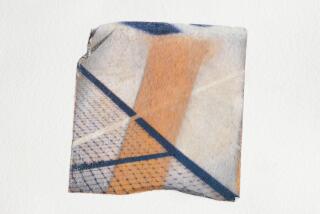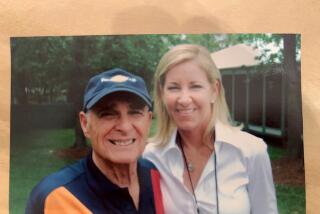Jack Kramer Remembers Good Ol’ Days : ‘Father’ of Professional Tennis Says Game’s Growth Amazes Him
HILTON HEAD ISLAND, S.C. — Although he is considered the “father” of today’s professional tennis, even Jack Kramer is amazed at how big the sport has grown.
“Not in my wildest dreams could I have foreseen this,” Kramer says of the Nabisco Grand Prix, the men’s tour that currently encompasses 78 tournaments with a total purse of $23 million.
Last year, John McEnroe won Wimbledon and the U.S. Open men’s singles titles as he amassed $2,026,109 in official earnings, just short of the men’s record set in 1982 by Czechoslovakia’s Ivan Lendl, this year’s U.S. Open champion. It is generally believed that, including endorsements, both earn in excess of $6 million a year.
“The big differences beside the money are the pressures now and the depth,” Kramer said. “Then, we had only five or six top players. Now, there are at least 50 or 60 men who can win a tournament.”
Kramer believes the open era in tennis has created both the big money and the intense pressure.
“When I was playing, the top player turned professional after winning Wimbledon and the U.S. championship,” said Kramer, who recently was inducted in the Du Pont All American Tennis Hall of Fame. “So, the next year’s Wimbledon winner, for example, wasn’t really the best player in the world. He was maybe third or fourth best. The best players were pros.”
Kramer’s big serve-and-volley game was the begining of the modern attacking game, the one epitomed now by McEnroe and Martina Navratilova.
Kramer turned pro in 1947 at age 26 following his second consecutive singles victory at Forest Hills and as a Wimbledon championship. The following year he dethroned Bobby Riggs, capturing the United States Professional Championships.
He continued his winning streak, stopping the successive challenges of Pancho Segura, Pancho Gonzalez and Frank Sedgman before halting his playing career and move into tennis promotion.
He pioneered the pro tennis tour across the nation and was instrumental in helping to organize what would eventually become the Association of Tennis Professionals (ATP), the players’ union.
“When we played, we only played six months out of a year,” Kramer remembered. “Now, these guys play 12 months. There’s no off-season anymore.
“The French came after Wimbledon then, so nobody really wanted to play on the clay right after playing on grass. Besides, most of the tournaments in the United States were either on grass or on cement.
“And nobody went to Australia in those days. If you went, it took 30 days by boat just to get there, another 30 days to get back. So, if you wanted to play Australia, you figured that was three months out of the year for just a couple of tournaments.”
Don Budge, who was inducted into the Du Pont All American Tennis Hall of Fame last year, was the first player to win the Grand Slam--Wimbledon and the French, U.S. and Australian championships--in 1938. He said it was the only time he played the slow, red clay courts at Paris’ Roland Garros Stadium.
“It also was the only time he played Australia,” said Kramer, who claims Budge was the best player of all time.
“But it’s different now,” Kramer said. “With all the money, you’re getting better athletes, like that youngster from West Germany, Boris Becker, who won Wimbledon, Mats Wilander of Sweden and Lendl.
“But the pressure to stay up there must be tremendous. When we got up there, winning Wimbledon or the U.S. championship, we turned pro and the pressure of being ranked No. 1 basically was off. We only had the pressure of winning.”
As head of the Southern California Tennis Assn., Kramer accepted $5,000 from Du Pont for his local chapter of the National Junior Tennis League.
“We are hoping to get good athletes who normally would play basketball or football or baseball and turn them into tennis players,” he said. “We need to get an athlete like Yannick Noah (of France), who would have been a great basketball player, to take up tennis like Noah did.
“We have a few quality tennis players and a quantity of good tennis players. What we need is a quantity of quality tennis players.
“But we still aren’t doing too poorly, you know. “What have we got: 40 Americans out of the top 100 in the world?”
More to Read
Go beyond the scoreboard
Get the latest on L.A.'s teams in the daily Sports Report newsletter.
You may occasionally receive promotional content from the Los Angeles Times.










